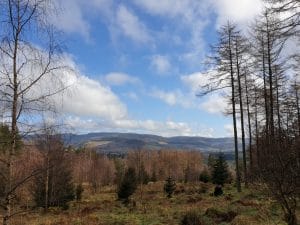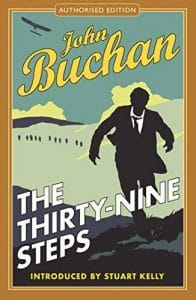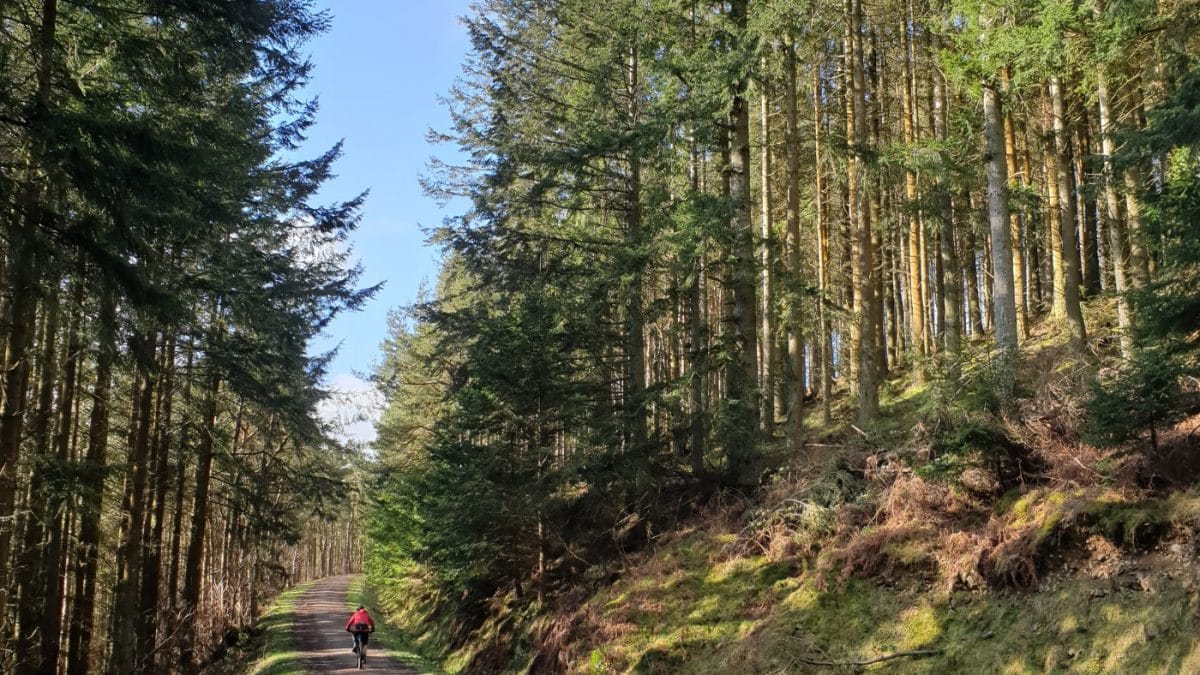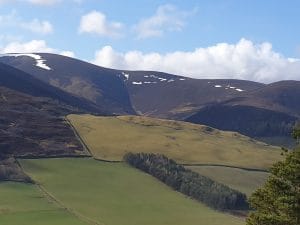
It’s a gorgeous day here in the Tweed Valley, cold and frosty first thing but sunshine and blue skies! So in order to get some fresh air and shake off thoughts of the impending apocalypse, my four-legged friend and I set out for a walk through the beautiful Scottish Borders countryside. For those of you who don’t know, I live in Peebles – a small town in the south east of Scotland, about 20 miles from Edinburgh. Our walk today took us to Cademuir which is just outside town, and the area is a mix of forest, farmland, hills and green valleys.
Still some snow on the Manor hills
Iron Age Relics
The name Cademuir possibly derives from the Gaelic, Cadh mhor, meaning the great fight. Cademuir Hill itself (416m / 1365 ft) is home to two Iron Age hill forts, of which very little remains other than earthworks – they are best seen from above and consist of a series of lines and trenches in the earth. The larger of the two forts is located on the summit of the ridge and contains the traces of at least 35 timber-framed houses, so there must have been a sizeable settlement here at some time in the past. The smaller fort lies to the west and is protected by a feature called a chevaux de frise, which is line of stones or boulders (some about half a metre high or more) set at the outer edge of a small gully. The stones would have been hidden by the gully and therefore invisible until the last minute – the perfect defence against mounted intruders! About 100 of these stones remain, strung across the hillside like a line of sentries.
The Iron Age began in Great Britain around 800BC, and hill forts remained an important part of everyday life until the 1st century AD. There are around 1000 Iron Age hill forts in Scotland, mainly located in the area to the south of the Rivers Clyde and Forth, but most were eventually abandoned following the invasion of the Romans in 43AD.

The John Buchan Way

Our route through Cademuir Forest also follows part of the John Buchan Way, a 13-mile way-marked path which stretches from Peebles to the village of Broughton. It’s a great walk which you can do in a day, with 3 main ascents and a total climb of about 800m / 2625 ft. John Buchan, one of Scotland’s most famous authors, spent a lot of time in this area as a child (his grandparents lived in Broughton) and he became Member of Parliament for Peebles and Selkirk in 1911. He went on to write over 30 novels but is probably best known for his spy thrillers including The Thirty Nine Steps, an action packed “man on the run” adventure novel. If you ever get the chance to come to Peebles you can visit The John Buchan Story, a fascinating collection housed within the local museum dedicated to the author’s life and works. Visiting museums is thirsty work, so why not head to one of the local pubs afterwards for a pint of Greenmantle? A beer with “liquorice aromas, bittersweet body and delicious hop aftertaste” , it is produced by local microbrewery Broughton Ales and named after the sequel to The Thirty Nine Steps.
The Pilots Trail
The path through the forest climbs steadily and then opens out onto bare hillside by way of the Pilots Trail, so-called after two downed German pilots who took refuge in the woods during World War II. It is said that only the smoke from their campfire gave them away – although this tale may be apocryphal as there doesn’t seem to be any hard evidence of a crash landing! But for whatever reason, the name has stuck, and there are beautiful views over the surrounding hills from the top.




